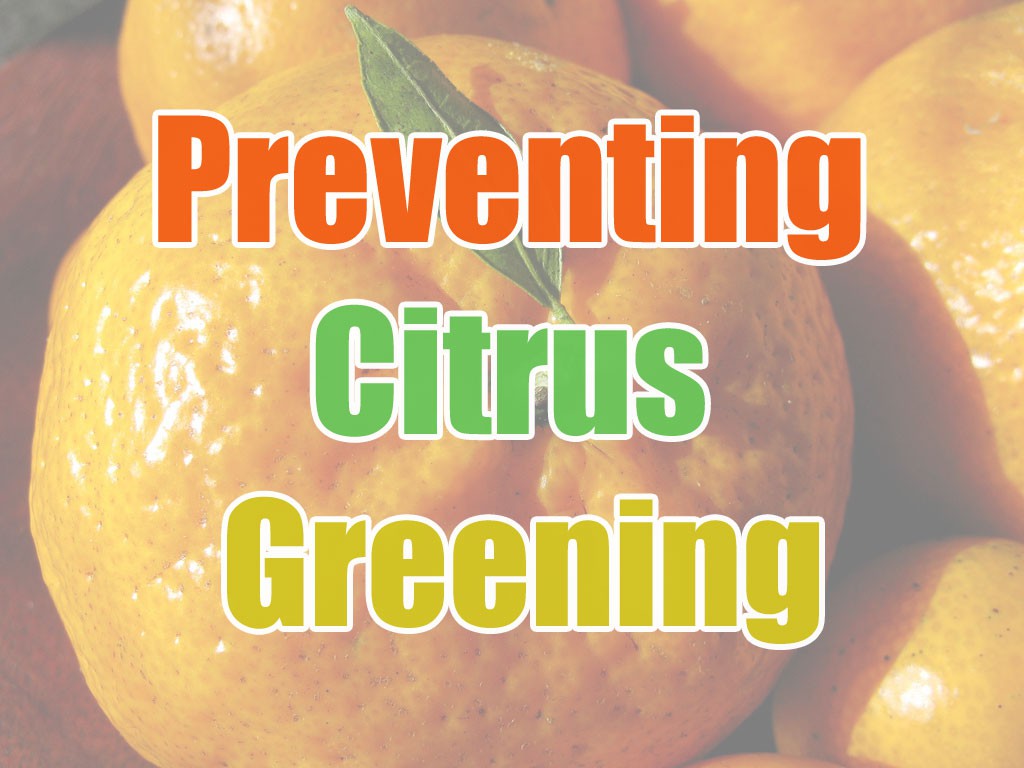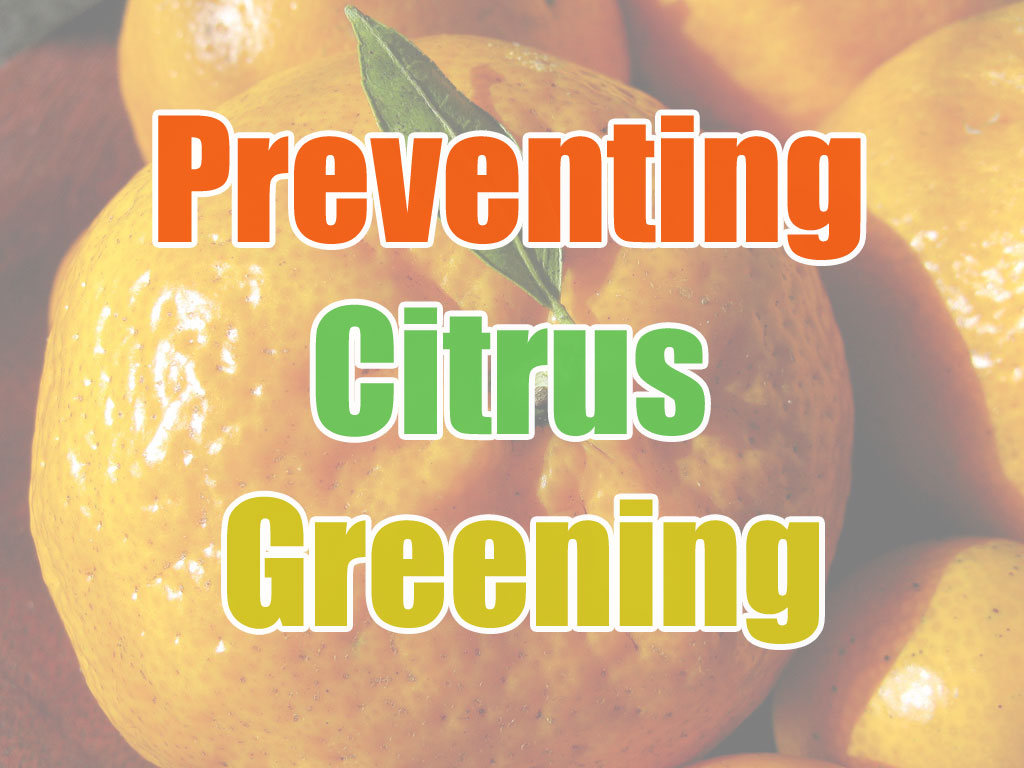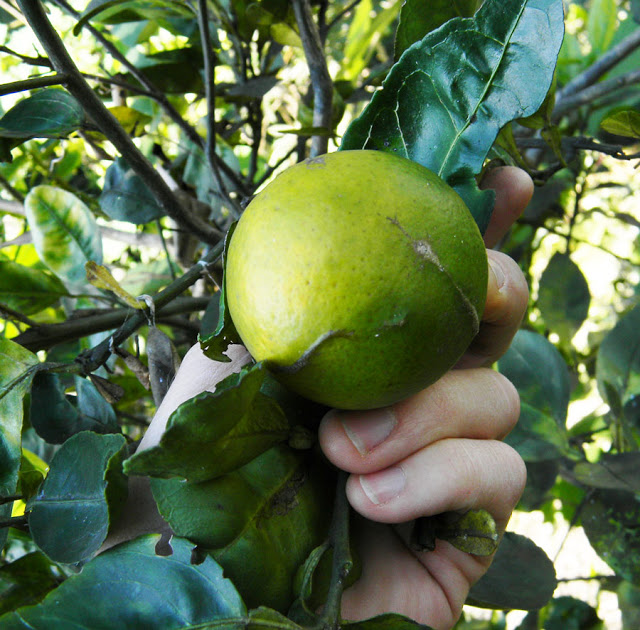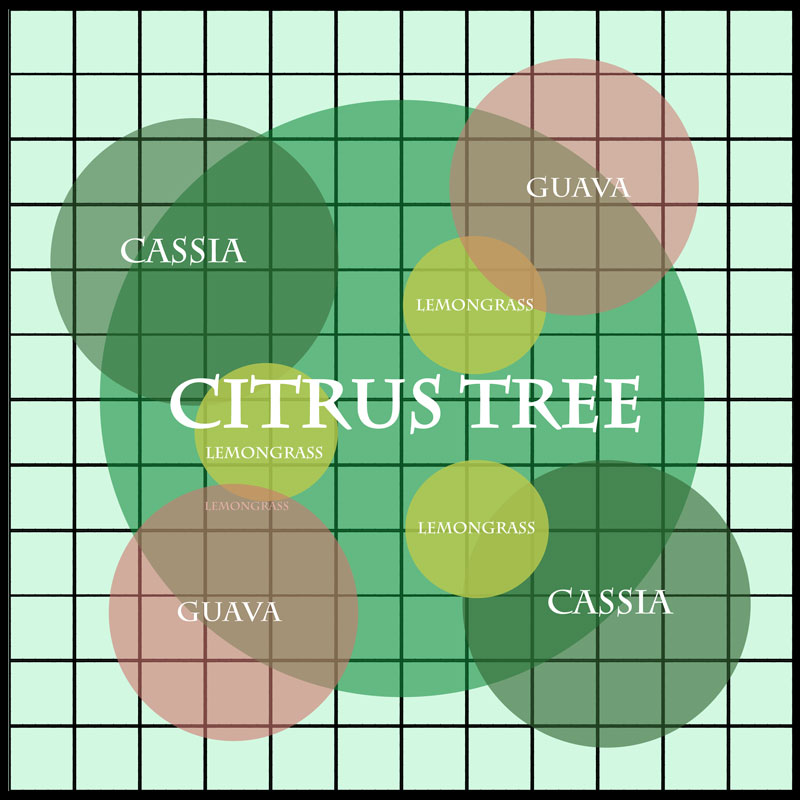 I posted on Monday that I designed a fruit tree guild I hope may prevent citrus greening.
I posted on Monday that I designed a fruit tree guild I hope may prevent citrus greening.
This is experimental, of course. Unfortunately, curing citrus greening doesn’t seem to be possible, so my thought is we should try and prevent it through permaculture practices. Preventing citrus greening with chemicals hasn’t been able to stop the march of the disease across the country, so why not try another way?
I believe part of the reason we’re facing the destruction of the citrus industry due to this disease is our penchant for monoculture farming. When you stick plenty of the same crop all in rows, nature tries to balance things out. A citrus grove is like a hospital. Jam a bunch of people together in one place, then introduce other people with terrible diseases and some of those diseases are going to spread and wreak havoc.
Permaculture design looks to nature for assistance in the growing of food and the curing of plant diseases and pest issues.
Though citrus greening may be incurable right now, some hope lies in repelling the citrus psyllid that carries the greening virus. Research has shown that guava trees contain compounds that drive away the citrus psyllid and that some farmers have had luck staving off the disease by interplanting guavas with citrus.
That said, here’s my idea to prevent citrus greening.
A Tree Guild to Prevent Citrus Greening
What if we were to plant a citrus tree and add nitrogen fixers as is the usual permaculture practice. Then, after that, why not add a couple of guava trees to repel the citrus psyllid. Then, for further anti-pest action, one could plant lemon grass in clumps around the tree.
Here’s an illustration:
So, simple enough, right?
I planted a Pineapple orange tree this spring using this method. The guild system above is just a basic framework. Beyond the nitrogen fixing trees, you add the guavas for repelling citrus psyllids and the lemon grass to hopefully repel psyllids and other insects. I also planted some malanga, cannas and other random plants. Adding in insectary plants to bring in predatory insects like ladybugs would be good. For more food in the space, you could plant edible groundcover – but the main point is to make sure you try to fight citrus greening by planting those guavas and lemongrass (which hopefully helps).
Anyone have any more ideas on this guild to prevent citrus greening? I would love to hear them. I’m hashing the idea out in my mind and would appreciate your input.




32 comments
I have a couple pineapple guavas. Are they the same thing? Could I plant them around my citrus tree for this to work?
Good question. We’d have to research and see if they contain the same compounds that repel psyllids.
I was going to ask the same thing! Would really appreciate it if you’d share results of your research! Great info. Thanks!!
That’s pretty innovative. I have a handful citrus trees, but the specter of citrus greening is always looming over my head..the more I read about it the scarier it is since there really isn’t anything that can be done..hopefully your solution will work to prevent it, only time will tell.
That’s interesting! I have a guava planted next to kumquat, and a calamondon. The kumquat always looks sickly but produces like crazy… An the calamondon I’ve had 15 years in a pot… An planted it in the ground back in the spring. It’s going thru a ruff patch learning to live outdoors… Lol!
have you considered american beautyberry? It is an insect repellent too and you could make the berries into jam.
Good thought. We have those all around here and have eaten the berries in the past.
How lucky and smart am I?! Last year we planted our guava and our navel orange beside each other just because we bought them at the same time! Who knew? Thanks for the innovative idea. David, I think I will plant a couple more in that area and add the lemon grass!
Awesome, Debbi. You must have some sort of magical plant power.
I just read an interesting article about a grandfather and grandson who own a Florida citrus grove. Most of their organically managed crops are being wiped out by greening. Only one small grove of theirs hasn’t been affected by greening even though all the others have. It is popular older grafted temple Orange on mandarin rootstock, but what is unique is that this grove was started in 1944 and the or get weren’t sprayed with conventional chemicals until they were 25yrs old and such things became popular. The grandfather theorizes that this delay chemical application allowed the trees to develop mature healthy immune systems that have made them resistant to greening.
I have six healthy Valencia orange trees that I started from seed earlier this year that I’m growing with compost. Since the virus isn’t transmitted through seed, my guys are, so far, safe. I will plant them with some of your guild suggestions along with keeping them chemical free and see what happens. Hopefully natural, companion-planted slow food will be able to beat this thing. I think fast-grown-engineered food is gonna be the death of the agricultural industry.
I agree with you completely. The way to beat this isn’t through doing more of the same monoculture nonsense. God has designed nature as a self-healing system, provided we work with her rather than against her. May your little trees thrive!
I’ve also looked into this, and each one of the technical agricultural tests that have been done with guava all cite that it specifically needs to be white guava.
Thanks for the data – do you have some links we can sift through? I couldn’t find anything on species or if others contained the repellent properties.
Any news on the possible white guava angle?
Not yet.
Here’s a study that says, “Significant reductions in ACP infestations in citrus interplanted with pink guava were identified, but there was no reduction in citrus interplanted with white guava. The effect of pink guava on ACP infestations could be investigated further.”
https://www.ars.usda.gov/research/publications/publication/?seqNo115=307596b
And nothing on cattley guava, I guess.
Thanks for finding this study, Ben.
Did you plant white guavas?
How is the guild doing now? Any sight of the psyllids around the citrus to date?
Wouldn’t it be awesome if citrus repelled Caribbean fruit fly in its stead?! Wishful thinking perhaps! :)
I would love to get an update. It takes about 3-4 years to really see some greening symptoms. But the Psyllid activity is something we can observe right away. Those things are great at destroying young leaves even before they transmit the disease!
Thanks!!
I moved and haven’t been able to check on progress, but I still think it’s a good idea. I will find out from the new homeowner eventually.
I just read somewhere that guava has been said to be just a little invasive (I’m in south Florida). Is this something that I should look out for when planting them near my citrus trees? Or is that just total bs? I’m putting together a forest garden as a final project for my permaculture class and stumbled across this post! Thanks so much!
It’s not invasive in Florida in any real way. They may self-seed once in a while, but I wouldn’t worry about that unless maybe you’re at the edge of a big protected forest.
I will have to dig around and see if I can find free access to the whole article, but it appears that any guava will work. However, the problem with these types of studies seems to be the fact that nature doesn’t provide a great control group in a sterile field. I don’t think there’s really any way to have a great control group to study against since you cannot have complete soil, climate, insect etc. mixtures to match that against the field. Anyways still interesting. I’m following this and hoping that others will find more info
https://www.ars.usda.gov/research/publications/publication/?seqNo115=322923
Thanks for the tips on what to plant with citrus trees. Can you give me more information on the “cassia” you’d plant? Is it another edible plant? Thanks!
Another possible strategy might be to plant Common Jasmine Orange(Murraya paniculata) around the property, but not close to Citrus. This shrub is a host for Psyllids but doesn’t allow the the HLB bacteria to replicate. Psyllids that reproduce on this host should be free of bacteria. It seems impossible to entirely prevent Psyllids from reaching the Citrus. Lets try and make those that do, disease free.
The ideal alternate host would produce a growth flush before the Citrus, encouraging the Psyllids to reproduce there. The idea is to try to make sure what Psyllids do make it to the Citrus aren’t carrying bacteria.
Good thought.
Now I know where I’m planting my guavas and lemongrass! In FL 3 years now and am now getting all my potted plants in the ground. Thank you, David the Good!
Fantastic, Susan. You are welcome.
I found a study with a list of Citrus Psyllid Repellant Plants.
Per your suggestion, I’m going to try a lemon guava (I already have one in a pot) and lemongrass (because I love it in tom kha gai soup), but I’m also going to try these, from the study:
Peppers
Okinawan Spinach
Lantana
Honestly, I hate the smell of lantana, but I’ll put up with it, since the psyllids hate it too.
Here’s a link to the study:
https://onlinelibrary.wiley.com/doi/full/10.1002/ece3.6876
Good thoughts.
There is anecdotal evidence that citrus planted under or close enough to an oak trees prevent greening… there is a tanin in the oak leaves that kills the disease on a micro level and there is limited info on this but there is a guy on YouTube that visited random properties with mature orange trees in Florida LOADED with fruit in woods areas with no signs of greening while nearby groves were decimated from the disease and some grove rows on the edge of woods never got the disease. Lemongrass definitely helps with miners and such but I mulch when the oak leaves fall here in Jax area.
What variety are white guavas? What do they look like. We have a lot of different guava varieties here in nz.
Comments are closed.